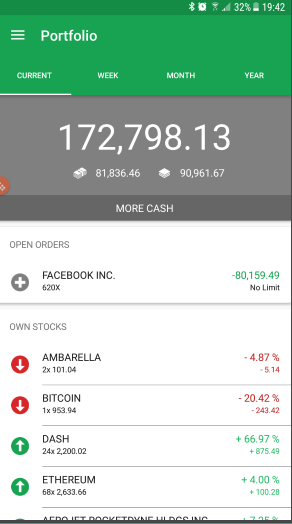Valuing a company is no easy task. This post serves to list the most frequently used ratios to help you with this process.
Earnings Per Share: Before you can understand many of these ratios, it is important to learn what earnings per share (EPS) is. EPS is basically the profit that a company has made over the last year divided by how many shares are on the market. It gets a little more complicated because you don’t include preferred shares, also the number of shares could change throughout the year. But don’t worry this number will be given to you on any financial website.
![]()
Price to Earnings Ratio: Price to earnings ratio (P/E) measures what investors are willing to pay for each dollar of earnings for the company. The P/E ratio has its imperfections, but it is nevertheless the most widely reported and used valuation by both investment professionals and public. A high P/E ratio means investors are paying more for today’s earnings in anticipation of future earnings growth.
Essentially, it is the stock’s current price divided by the company’s earnings for the past 12 months. Higher P/Es indicate a riskier market, and vice versa.

Debt to Equity Ratio: This is a leverage ratio that compares a company’s total liabilities to its total shareholders’ equity. This is a measurement of how much suppliers, lenders, and creditors have committed to the company versus what the shareholders have committed. A lower number means that a company is using less leverage and has a stronger equity position. This easy-to-calculate ratio provides a general indication of a company’s equity-liability relationship.

Dividend Yield: is expressed as an annual percentage of the current share price. Dividend yield is calculated as the company’s annual cash dividend per share divided by the current price of the stock. The dividend yield is found in the stock quotes of dividend-paying companies. Price to Book Ratio: (P/B) ratio compares a stock’s market price to its book value (shareholders’ equity). The price-to-book value ratio, is an indication of how much shareholders are paying for the net assets of a company. “Price-to-book”, provides investors a way to compare the market value, or what they are paying for each share, to a conservative measure of the value of the firm. This ratio can be calculated by dividing the current closing price of the stock by the latest quarter’s book value per share.
Price to Book Ratio: (P/B) ratio compares a stock’s market price to its book value (shareholders’ equity). The price-to-book value ratio, is an indication of how much shareholders are paying for the net assets of a company. “Price-to-book”, provides investors a way to compare the market value, or what they are paying for each share, to a conservative measure of the value of the firm. This ratio can be calculated by dividing the current closing price of the stock by the latest quarter’s book value per share.
Payout Ratio: This ratio tells you the proportion of earnings paid as dividends to shareholders. The dividend payout ratio is an indicator of how well earnings support the dividend payment. Lower payout ratios are usually preferable, with a ratio over 100% indicating the company pays out more in dividends than in net income. Current Ratio: The current ratio is a popular liquidity ratio (also referred to as its current or working capital position). The concept behind this ratio is to measure a company’s ability to pay short-term and long-term obligations. The current ratio considers current total assets of a company relative to their current total liabilities. In theory, the higher the current ratio, the better.
Current Ratio: The current ratio is a popular liquidity ratio (also referred to as its current or working capital position). The concept behind this ratio is to measure a company’s ability to pay short-term and long-term obligations. The current ratio considers current total assets of a company relative to their current total liabilities. In theory, the higher the current ratio, the better.

If this post has helped you in anyway, please comment below and follow the Student Insider Blog for more content yet to come!
Sources: http://www.investopedia.com/slide-show/simple-ratios/ http://money.usnews.com/investing/articles/2017-04-03/5-ratios-investors-need-to-know https://www.google.com/#q=current+ratio







